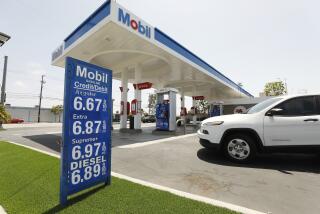Oil Prices: Reserve of U.S. Muscle
- Share via
Soaring heating oil prices in the Northeast have led to calls for federal relief for hard-hit homeowners. Some in Congress want the government to force down prices by tapping into the Strategic Petroleum Reserve, which holds more than 570 million barrels of oil. The Energy Department, while reluctant, shouldn’t reject that option. Energy Secretary Bill Richardson plans to meet with oil industry officials from Saudi Arabia, Mexico and Venezuela, all major suppliers to the United States, to try to convince them to raise their output. The possibility that the petroleum reserve could be used to expand supplies gives him a potent bargaining tool.
The petroleum reserve was created to protect the United States against cutoffs of imported oil of the kind that accompanied the Middle East war in 1973 and the Iranian revolution in 1979. Should it be used drive down prices now? It was once before, and effectively, in 1991 when the Persian Gulf War sent oil prices skyrocketing. Its use once again could be justified because current high oil prices result from planned production cutbacks of more than 4.3 million barrels a day by OPEC, the 11-country cartel, and other key producers, including Mexico. The cutbacks began last March and are scheduled to be reconsidered at an OPEC meeting next month.
Oil prices are at a nine-year high, while U.S. commercial crude oil inventories, at 281 million barrels, have dropped to their lowest level in more than 20 years. Americans and other big consumers aren’t blameless; years of cheap oil encouraged profligacy. But last month the Saudi and Venezuelan oil ministers said a fair price for benchmark crude would be in the range of $25 to $26.50 a barrel. Recent prices have ranged from $27 to nearly $29 a barrel. Oil producers are entitled to a reasonable price, but not an extortionate one. Washington should use the leverage of the Strategic Petroleum Reserve to encourage a boost in OPEC’s output.
More to Read
Sign up for Essential California
The most important California stories and recommendations in your inbox every morning.
You may occasionally receive promotional content from the Los Angeles Times.













